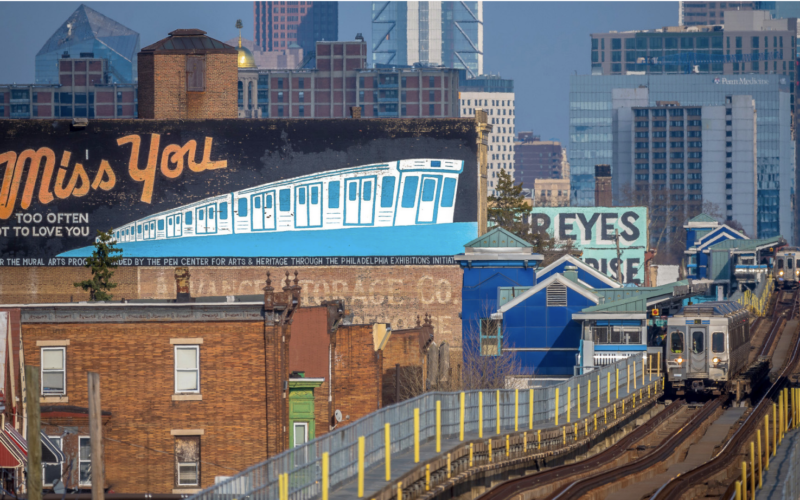
In 2016, the Pinellas Suncoast Transit Authority (PSTA), an agency outside Tampa that serves about 32,000 daily trips, became the first public transit agency to replace bus routes with subsidized Uber service.
Press coverage was giddy. “Are partnerships with Uber the future of public transit?” more than one outlet asked.
Three years later, the results are in, and they are much more muted than the early headlines.
A new report from the Shared Use Mobility Center, “When Uber Replaces the Bus: Learning from the Pinellas Suncoast Transit Authority’s ‘Direct Connect’ Program,” points to a narrow conclusion: If an agency wants to cancel inefficient, low-ridership bus routes, subsidizing a small volume of trips on an Uber-type service can soften the blow. But even then, difficulties obtaining precise and accurate data from Uber limit the ability to evaluate the Pinellas County program.
The Direct Connect program, which partially covers the cost of trips via Uber, traditional taxis, or wheelchair-accessible vehicles to designated bus stops, emerged from lowered expectations. In 2015, after Tampa-area voters rejected a ballot initiative that would have increased transit funding, the PSTA board directed the agency to rethink low-ridership bus routes.
By cutting service on several of these infrequent, lightly-used-but-highly-subsidized routes, PSTA hoped to redirect resources to improve frequency on its core network. The Direct Connect program was intended to both compensate for the loss of the low-ridership buses, and provide a first- and last-mile connection to remaining bus routes.
In its initial iteration, Direct Connect replaced a route called the East Lake Connector and supplemented another one known as the Pinellas Park Circulator. Both routes carried fewer than 30 trips per day. In the case of the East Lake Connector, on-demand services completely replaced the bus, and in the case of the Pinellas Park Circulator, the services were supposed to function as feeders for the bus, which continued to operate.
PSTA contracted with Uber, United Taxi, and Wheelchair Transport to provide the service. Riders would be eligible for a subsidy if they started or ended their trips within designated zones. Uber developed “geofences” to mark off these zones in its app, while discounts for the non-Uber providers were applied at the discretion of drivers, who would then invoice PSTA monthly for eligible trips.
The program rolled out in three distinct phases from 2016 to 2018. During the first phase, there were two eligible zones, and Uber was only permitted to serve one of them — the Pinellas Park Circulator area. A per-trip subsidy of $3 left riders on the hook for an average of 75 cents more than they would have paid for a bus trip, though wait times were shorter. With fewer than two Uber rides ordered per day, one person involved in the first phase explained that “it didn’t rock anybody’s world.”
During the second phase of the program, the per-trip subsidy was increased to $5, which nearly covered the entire cost of each ride. PSTA also upped the marketing budget and outreach efforts, and expanding the zones where riders were eligible for a discount to encompass the entire county. Now, people anywhere in Pinellas could get subsidized Uber trips to or from eight intersections near bus stops. All told, these locations were within walking distance of 20 bus routes.
As you might expect, ridership increased, but the program still operated at a tiny scale, maxing out at about 40 trips per day. The same 10 individuals accounted for about 30% of all use. The Pinellas Park Circulator, meanwhile, gradually lost riders over the course of 2017 as Direct Connect ridership grew, and the route was cut in 2018. Instead of helping people connect to the bus route, the Uber subsidies appear to have cannibalized riders.
The third phase of the program began in 2018. Instead of eight zones with one pick-up/drop-off location each, riders could apply the $5 subsidy to any trip in the county that originated or terminated at one of 24 designated locations. As a result, reported ridership soared above 4,000 trips in September of 2018, more than tripling the previous rate — or so it seemed.
After those ridership numbers came in, the PSTA Board voted to extend the program for three more years, but the figures turned out to be greatly inflated. Thanks to an error in Uber’s geofencing around the 24 pick-up/drop-off locations, many riders received the Direct Connect discount when they were ineligible to receive it, exaggerating usage between 60% and 300%. Uber did not bill PSTA for the erroneous subsidies, but the reporting glitch likely influenced the agency’s decision to continue the program until 2021, with an annual budget of $200,000.
That’s less than the agency was spending on routes like the East Lake Connector, which cost $400,000 annually, meaning PSTA could redirect some operating funds to bus routes with higher ridership. In that context, Direct Connect may have accomplished the goal of smoothing the way for PSTA to allocate its resources for fixed-route service more efficiently.
As a service on its own terms, however, it’s hard to assess Direct Connect.
A lack of strategic objectives and accurate data makes it impossible to evaluate the program. PSTA did not lay out clear goals for the Direct Connect program. Combined with Uber’s refusal to supply precise location data for pick-ups and drop-offs, this stymies attempts to assess success or failure.
PSTA never conducted intercept surveys of riders or held focus groups, which would have helped the agency understand the program’s effect on travel choices. For all the agency knows, it might be paying people to take cab trips they would have taken anyway.
There is no measurement of Direct Connect’s effect as a first- and last-mile connection to fixed-route bus service. Given that the program served fewer than 100 trips per day at its peak, even if every passenger connected to transit it would not represent much of an impact on the agency’s daily bus ridership.
The program isn’t scalable. The small scale of Direct Connect highlights its inherent limitations, and why other agencies will find limited application for similar programs.
While the $5 per-trip subsidy for Direct Connect rides is lower than the $40 PSTA was spending per rider on the East Lake Connector, it’s higher than the agency’s average per-trip subsidy of $3. The program still amounts to a diversion of resources from more productive fixed-route service.
A fixed subsidy per trip means there is a hard cap on ridership: The more trips people make via Direct Connect, the less financially viable it becomes, which is the inverse of how public transit works. And with the elimination of zone-based restrictions, the price of a trip can far exceed the $5 subsidy, meaning riders are shouldering higher costs than a bus fare. As such, programs like Direct Connect are not going to replace fixed-route service that moves significant numbers of people at affordable prices.
Even Direct Connect’s modest usage may not be possible much longer, given the artificially low price of VC-backed Uber fares. “Much of the [program’s] cost savings depend on the on-demand service providers deriving most of their income from non-agency sources, often in non-unionized, lower-wage roles, as in the case of Uber drivers,” the report notes. At some point the VC bubble will burst and workers will demand fair wages and compensation.
Lost in the hype for this program is that it was never intended to increase ridership. To get more people on the bus, PSTA knew it had to redirect operating resources to improve frequency on its core bus routes. The future of transit isn’t a $5 discount on Uber trips. It’s fast, frequent, reliable fixed-route service that gets people where they want to go.
 Accept No Substitutes for Full Trip Data From Uber and Lyft
Accept No Substitutes for Full Trip Data From Uber and Lyft
Uber's new Movement platform is no substitute for the full data cities have been asking for.
Read More Who’s on Board? Riders Explain Why They’re Using Transit Less — And How to Win Them Back
Who’s on Board? Riders Explain Why They’re Using Transit Less — And How to Win Them Back
Public officials can’t throw up their hands and claim there’s nothing they can do about falling transit ridership. Despite strong headwinds, they can win back riders.
Read More